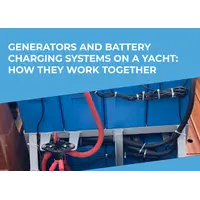Tying your yacht to a dock or buoy might seem like the easiest thing in the world, but it’s not as obvious as it seems. Not only you want to reliably secure your yacht, but also avoid possible damage to your vessels, lines, pier and other boats. One of the most essential skills for a sailor is tying the right knot at the right time – there are hundreds of possible knots for different purposes and choosing them arbitrarily might be the easiest way to a disaster. Ideally, knots for mooring must be the most reliable, while not too difficult to tie and untie. In this guide we will discuss such knots in detail.
What are Mooring Knots? Definition and Main Purpose
“Mooring knot” is just a term used to define the context of usage – knots that we will discuss here can used in camping, in military, in rock climbing and other fields. What makes them absolutely perfect specifically for mooring is their ability to hold incredibly high weights, reliably stay in required state even under influence of large masses of water, resist eventual loosening over long period of time.
Difference Between Mooring and Other Marine Knots
Knots for mooring are part of much bigger marine knot family and yes, they are just as easy to forget unless you constantly practice tying them. There are knots for rigging, securing the cargo, tying fenders, attaching a dinghy and so on. It’s the context that matters.
Usually mooring knots have a certain balance between ease of use and reliability – you want to be able to untie the knot on command and not wake up in your sleep imagining your yacht drifting away. Surely, your yacht will not stand still on waves, so it will pull the knot in various directions all day and all night, which stresses it to the maximum. Centuries of marine practice come to the rescue, thankfully – the knots we recommend will do the job just fine.
Main Types of Mooring Knots
It would take way too much to go through all possible knots that mankind came up with. We will cover some of the most iconic classic and specific knots in this article.
Classic Knots
These knots are not supposed to be used on their own necessarily – think of them as Lego blocks or ABC of marine knots.
Half Hitch
One of the simplest tools in your knot toolbox is Half Hitch. Usually, it is used together with other knots and often as the final one. That’s the knot every kid knows how to tie: you wrap the rope around, cross the end over standing end, pass it under and through, then tighten.
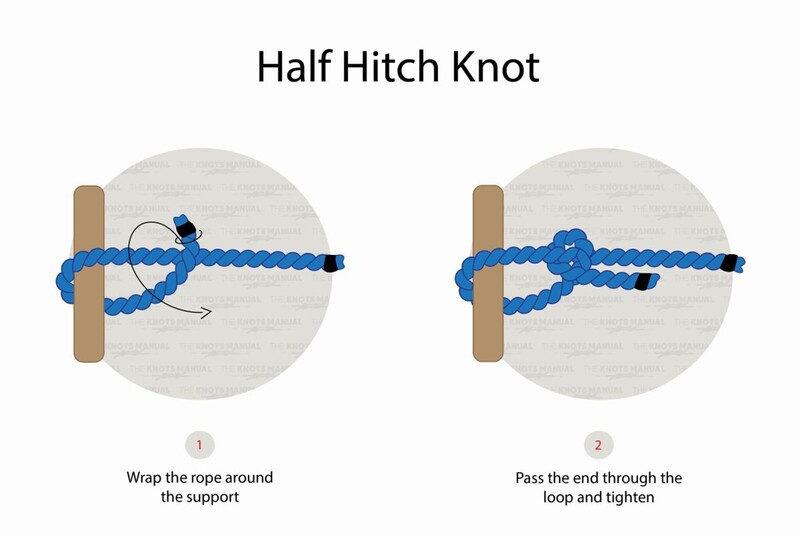
On its own it’s not the most reliable, but it can be effectively used as a part of two round turns and two half hitches knot, which we will talk about below.
Simple Loop
Another piece of the puzzle is the simple loop or overhand loop. It is also used in more complicated and useful knots. To tie it, just create a loop in the rope itself, take the end and pass it through, tighten. This loop will be secure enough for later use. Again, under heavy stress it will fail you, so don’t use it on its own.
Bowline
It is often called "king of knots" – why such fancy title? Well, it is very easy to tie even for a beginner and the loads it can withstand are quite remarkable. Usually knots with such characteristics are difficult to untie, but with bowline you need just one move to undo it.
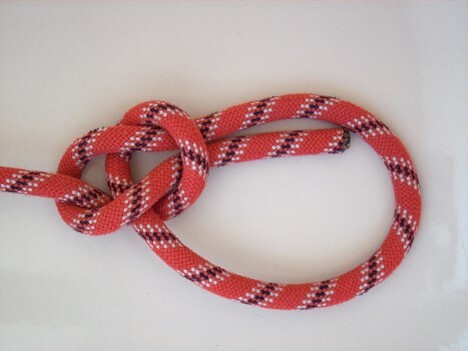
It’s also easy: first you create a loop in the standing part of the rope, pass the end through it and around the standing part, then pass it back into the loop, tighten it by pulling the standing part.
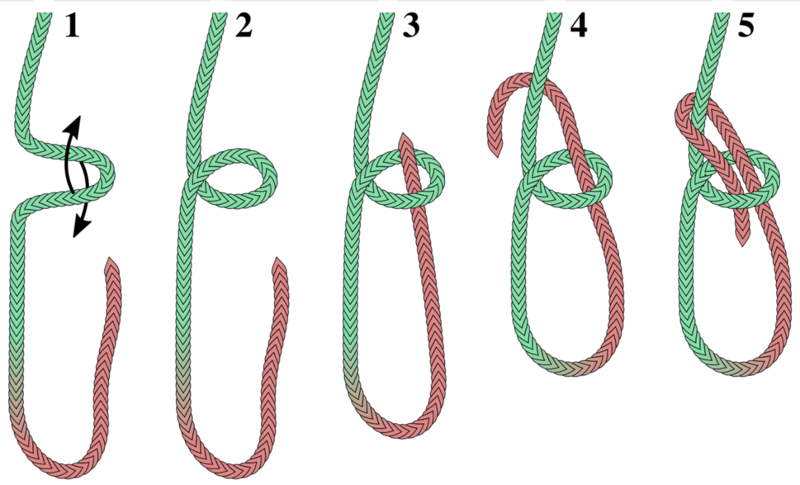
Specific Knots for Mooring
Now we get to completely practical knots, tested by us in practice and recommended after many years of sailing. These will not fail you, as long as you tie them right.
Two Round Turns and Two Half Hitches
This one will provide incredible security and is easy to tie. You will need to wrap the rope around mooring ring or cleat twice, creating two round turns, hence the name. Then you pass the end right under the standing part and go through, getting a half hitch. Then you just repeat the half hitch to finish the job.

This knot will hold under pretty much any circumstances, even if you moor the yacht for months.
Clove Hitch
You can use clove hitch whenever you are planning a short-term mooring or when you tie fenders to railing. Be careful with this knot it might not hold if the stress is constant over a long time period. You should use it only as a temporary solution.
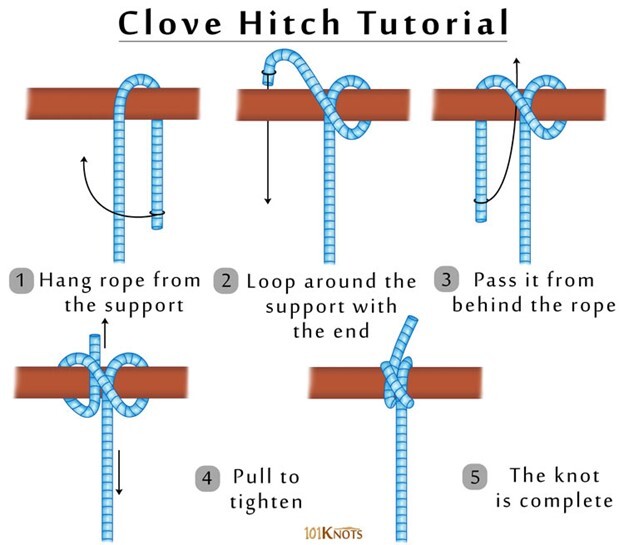
To tie the clove hitch, pass the rope around the mooring rail, cross it over itself and do the same pass. You will get a loop. Then slip the end of the rope or cable under that second loop and pull to tighten it.
Carrick Bend
Use this one when you need to connect two ropes of any size: this way you can extend the ropes without the fear of them untying, allowing you to connect your mooring lines to those of another vessel or lines already attached securely at the shore.

To get the Carrick bend, form a loop on each rope’s end. Then put the loops both under and over each other, tighten by pulling all the four ends.
Choosing the Right Knot Depending on the Situation
There are so many knots out there! But don’t worry – you don’t have to memorize all of them. As long you know exactly what you are trying to do, your goals will guide you. When you encounter a problem regarding lines and get bewildered by it – that’s when you go and look for the right knot. Maybe, that’s how you ended up here in the first place?
Considering the Mooring Conditions
One of the factors that you must consider is the one that you can not change in any way – here’s the marina, here’s the weather forecast and you still have to moor. It might strike you as odd that it can affect the type of knots you use, but as you imagine what’s going to happen to your yacht and mooring lines over time, try to also imagine what knot would be the most optimal for your particular situation.
Tides, wind, stormy waves, aggressive water currents – all these hint that a reliable two round turns and two half hitches is necessary. And if the weather is sunny and you know you’ll be back this evening to unmoor and sail off, why not use a simple clove hitch – there’s no need to waste time on something more secure in this case.
Considering the Type of Yacht
It is also important what kind of boat you are securing. If it’s a lightweight small dinghy, even a half hitch or a simple loop will do if it’s temporary. But for large heavy-pulling yachts you better use more reliable bowline, Carrick bend, two round turns and two half hitches, since crashing one of these because of a wrong knot would be a tragedy.

One of the best ways to check this would be to observe over time what your yacht does to different knots. You could conduct an experiment by using different knots and carefully checking on them, recording your observations. This way you can find out what knot you can get away with for your specific yacht.
FAQ
Which knots are considered the most reliable for mooring a yacht?
We mentioned most of them above, so let’s sum it up.
- Half hitch. Simple, easy to learn, not the most reliable, better used in combination with other knots for additional security.
- Bowline. Will never fail you, has many uses (even outside the marine world), doesn’t slip or untie by accident good for attaching the rope to a cleat on the shore.
- Two round turns and two half hitches. If you want to sleep well at night, take some time to memorize this knot. First part, “two round turns”, secures the rope around the post or cleat, while “two half hitches” make sure that the rope doesn’t slide at all.
- Clove hitch. You’ll be right back? Tie a clove hitch. It can slip under heavy loads, so be careful with this one. You can add some half hitches to it to be sure.
Which knot is best for quickly tying and untying?
If you are in a hurry or you have many stops along the route, use either clove hitch or reef knot. Reef knot is used to join two ropes together but is not optimal for heavy stress. To tie the reef knot, bring to ends together, tie them into a half knot. Bring to ends back together, left over right, and tie a second half knot.
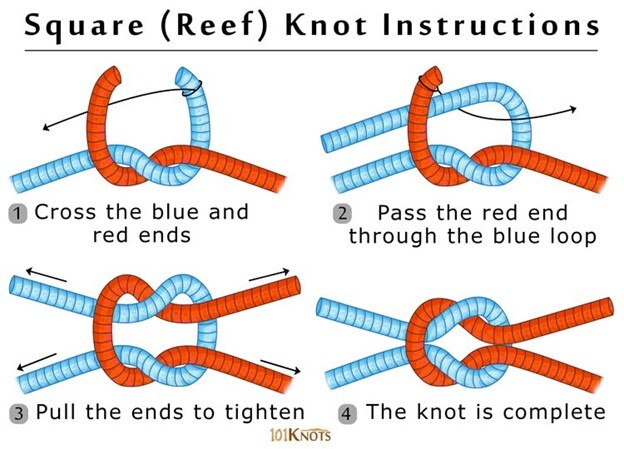
Can I use regular household knots to moor my boat?
Usually, it is not a good idea – popular granny knot is not going to hold extensive stress that a mooring line goes through on a daily basis. If you want to avoid slips and rope damage, take some time to memorize at least the main types of mooring knots.
What mooring rope materials are best for tying knots?
In our previous article we went full depth into materials used for making ropes, but here we’ll just say: nylon and polyester. Sure, natural materials sound trendy, but nothing will compare to high stress resistance of nylon and consistency of polyester. Both materials are not affected by UV radiation and chemicals, do not rot or house harmful bacteria.
How can I avoid knots coming loose during long-term mooring?
To avoid slips, make sure to consistently check the state of the knots – even if you are sure of your skill, human factor is always there. Constant movement of the yacht might loosen some simple knots quite quickly. You can always retighten or change the type of used knot. Try to follow weather forecasts and change the type of knots if necessary. If the waves are really high, consider using more ropes and more reliable knots just in case. Also, don’t forget about rope protectors and chafe guards to avoid additional abrasion and ruptures.
What should I do if a knot is jammed and difficult to untie?
We all sometimes bit off more that we can chew when it comes to getting creative with knots. You might end up with pretty incredible mess – looking just like the cord on your earphones when you finally find them.
If the knot is so tight that’s impossible to even loosen it using bare hands, use the tools created for this purpose: marlinspikes or fid. These allow you to untie hopeless knots without damaging the rope at all. If you don’t have such tools, you can call the dock staff to help you untie it or just ask them for an advice or a tool.
Don’t forget that in a very tight knot the rope is already screaming from pressure, so avoid jerking or forcefully pulling, no matter how enraged you are by the situation. Keep calm or you can easily damage the rope, adding to the list of problems.
What are the most common mistakes when tying mooring knots?
Here are some of the main mistakes that crewmen and skippers, especially beginners, make when mooring.
- Tying the knot incorrectly. Simply using the wrong technique while being sure that the knot will hold as promised – happens to the best of us, especially with knots you just learned.
- Assuming just by the looks of it. It’s not enough to tie the knot correctly – you need to check the reliability of the knot by pulling multiple times, while checking how it behaves under stress.
- Misuse of knots and materials used. Trying to get away with simple knots or regular ropes might lead to slips and loosening. Use the right ropes for the job and stick to marine knots.
- Neglecting the maintenance. Even the best high-quality rope will fail you after enough small ruptures and abrasions appear. If you allow your rope to constantly slide against a coarse material or you don’t clean your ropes made of natural fibers, it will get harder and harder to moor no matter which knots you use.
That’s it for now. Don’t forget that you can use many different ropes for mooring, but specialized mooring lines made of marine materials will serve you best. At topRik marketplace we have a wide choice of such lines, created for secure mooring in any conditions. Browse through catalog to find the model you need or give a call if you have any questions. You can also use the feedback form or send a message to [email protected] to get a consultation free of charge.



